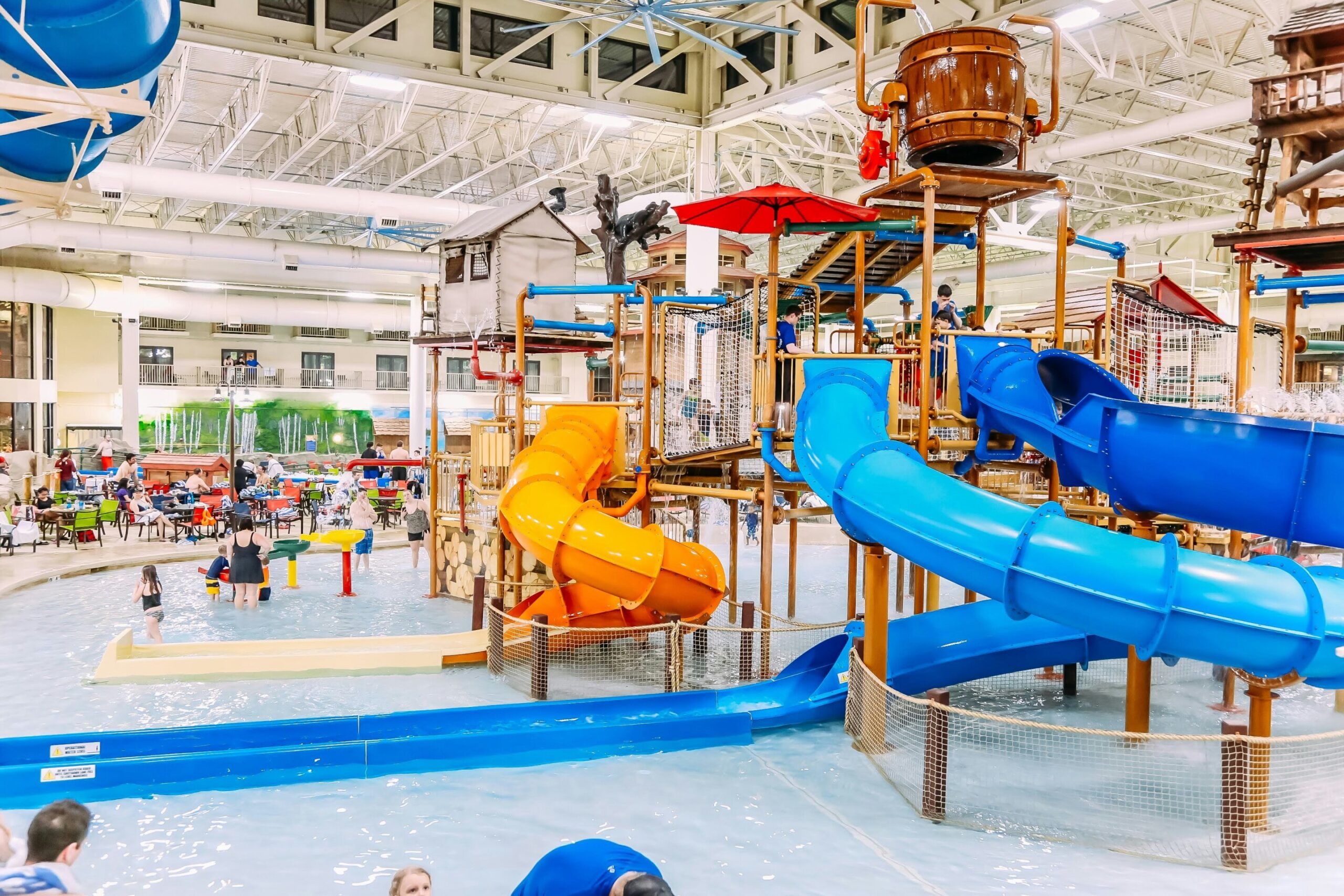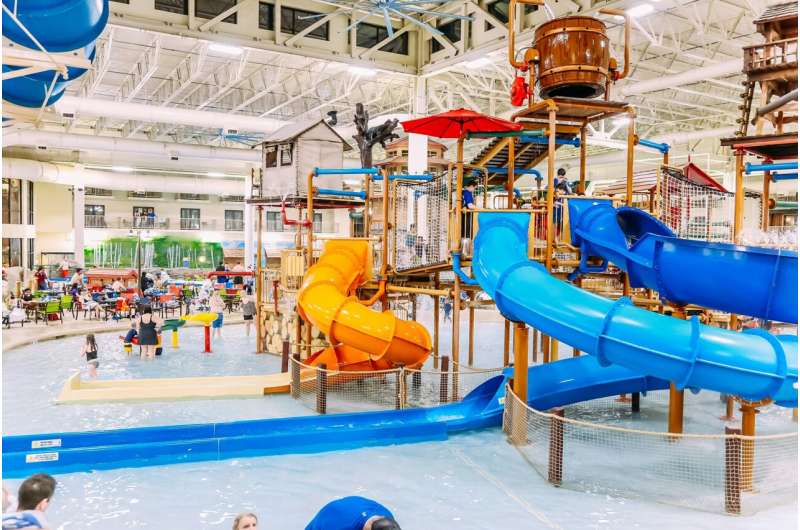

In the heat of summer, many parents take their children to splash pools or splash pads and other recreational water parks to cool down. But indoor aquatic facilities—with their fountains and spraying jets of water—can often be just as popular over the festive period, once children have got over the novelty of their Christmas gifts and are looking to burn off some energy.
However, some recent concerning news from the US suggests that some of these places may be quite unsanitary. If the water is not properly maintained, it can be a breeding ground for all sorts of nasty bugs.
In November, the US Centers for Disease Control and Prevention reported that between 1997 and 2022 there were 60 outbreaks of waterborne infections in America originating from splash pads and other recreational water venues. This resulted in more than 10,000 infections and 152 hospital admissions—mostly of children. Fortunately, there were no deaths.
Sources of the outbreaks were mostly due to cryptosporidium, an intestinal parasite, and shigella, a bacterium that causes severe diarrhea. Cases of norovirus infection were also common.
All of these bugs can cause serious infections in children if water containing them is accidentally swallowed—even if it’s only a few droplets. And we all know that children love to splash each other.
Although there are no national splash pad infection statistics for the UK, outbreaks of infection from contaminated water in indoor water facilities, such as splash pads and paddling pools, are a recognized public health problem.
Exposure to germ-infested recreational waters can cause gut, respiratory and skin infections, to which children are particularly vulnerable. Cryptosporidium is a significant UK waterborne infection problem that is most common in children under five years old.
In healthy people, cryptosporidium usually causes severe watery diarrhea with stomach cramps, which can lead to dehydration. But it can cause more serious illness in people with a weakened immune system, such as in those who have an autoimmune condition or have had an organ transplant.
Unfortunately, cryptosporidium is also largely resistant to chlorine, which is used to sanitize pool waters.
How it happens
How does pathogen contamination of splash pools occur? Splash pads are intentionally designed so that standing water does not collect in the water play area to reduce the risk of children drowning. The water may be stored in tanks and recycled to reduce running costs.
The water in splash pads and paddling pools is normally chemically sanitized with chlorine and filtered, which helps to prevent contamination. When children play in these facilities, traces of sweat, feces and urine can rinse off their bodies and into the water. So anyone playing there is being sprayed with diluted dirt and human waste.
Waterborne infections that cause acute illness can be transmitted by swallowing water contaminated with germs from infected people and chlorine is the primary defense against pathogen transmission in such recreational waters.
But the rinsed-off human waste in spray pools can inactivate chlorine—as can exposure to sunlight. The more bathers there are, the faster the protective chlorine is depleted.
Any factor that reduces active chlorine levels is likely to increase the risk that there will be germs in the water. Collectively, this means there can be difficulties in keeping the water in splash pools and pads adequately sanitized and safe—especially at busy times.
Keeping safe in splash pools
The infection risk that people contribute via the germs they deposit into recreational waters is well recognized. Most water activity providers advise that anyone experiencing a stomach upset or other infection within 48 hours should avoid entering swimming or splash pools.
It is a good idea to tell children not to urinate or defecate in the splash pool or other waters.
Chlorine depletion of splash pool waters can be reduced by encouraging bathers to shower before they enter the water, and perhaps for the bathers to avoid entering the splash pool if very crowded.
For water companies, adequate water quality monitoring and pathogen testing for parasites, bacteria and viruses are essential to help prevent infection outbreaks and keep patrons safe.
This article is republished from The Conversation under a Creative Commons license. Read the original article.![]()
Citation:
Why splash pools can be an infection risk for kids (2024, December 29)
retrieved 29 December 2024
from https://medicalxpress.com/news/2024-12-splash-pools-infection-kids.html
This document is subject to copyright. Apart from any fair dealing for the purpose of private study or research, no
part may be reproduced without the written permission. The content is provided for information purposes only.



